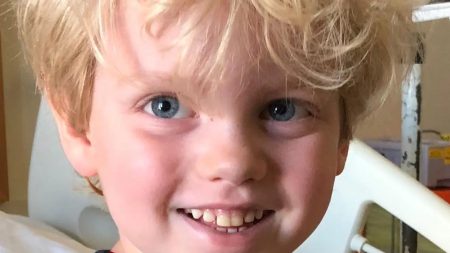The Prevalence and Impact of After-Death Communications (ADCs)
A significant portion of the British population, around half, express belief in an afterlife, a concept often met with skepticism. However, research conducted at the University of Northampton offers intriguing insights into the phenomenon of After-Death Communications (ADCs), suggesting that these experiences are more common than many might assume. Sophie Morrison, a research assistant at the university, has been meticulously analyzing thousands of reported ADCs from around the globe. Her work involves scrutinizing detailed questionnaires submitted by individuals who claim to have experienced contact with deceased loved ones. The aim is to identify patterns, themes, and potential evidence within these narratives, providing a framework for understanding a phenomenon that has long resided in the realm of the unexplained.
Morrison’s research reveals a variety of ADC types. Physical sensations, such as touch, are reported by nearly half of the respondents, while visual encounters with the deceased represent a similarly high percentage. Auditory experiences, including hearing the voice of the departed, are also common. A significant majority of those reporting ADCs describe the experience occurring during sleep. Importantly, the study focuses on spontaneous experiences, excluding instances involving mediums or séances, emphasizing the unexpected and direct nature of these communications. These messages often offer comfort, resolution, reaffirmation, or a sense of release, frequently categorized as the "four Rs." The research indicates that ADCs are not limited to the bereaved; a notable portion of those reporting ADCs are not actively grieving, suggesting that the phenomenon transcends the immediate emotional response to loss.
The prevalence of ADCs is substantial, with studies estimating that upwards of 60% of people have experienced some form of communication from the deceased, a figure that rises to 80% among those who were close to the deceased individual. This data aligns with previous research, including a study conducted by the University of Iceland, which documented millions of reported ADC experiences across Europe. Morrison’s research highlights the diverse nature of these experiences. Some accounts describe the deceased offering assistance, such as helping individuals locate lost items. Others detail "crisis cases," instances where contact occurs in close proximity to the time of death, often unbeknownst to the living individual. These cases are considered particularly compelling due to the lack of prior awareness of the death. One example describes a woman who was contacted in a dream by her biological father, whom she had never met, revealing his passing and informing her of a small inheritance. This information was later confirmed by his family. Many who recount dream-related ADCs emphasize their vivid and realistic nature, distinguishing them from ordinary dreams.
One of the primary arguments employed by skeptics is the notion that ADCs are merely wishful thinking on the part of the bereaved, a projection of their longing for connection. However, Morrison counters this argument by highlighting the evidential nature of many reported cases, including those witnessed by multiple individuals and those occurring before the death is known, negating the possibility of wishful thinking. Furthermore, the demographic data reveals that reports come from a diverse range of individuals, often highly educated and not necessarily grieving. The increasing presence of electronic phenomena in ADCs, such as text messages, voicemails, and music played on switched-off devices, adds another layer of complexity. While potentially attributed to the increasing pervasiveness of technology in daily life, this aspect also raises questions about the potential interaction between the deceased and the electronic realm.
Studies on belief in the afterlife and related phenomena reveal evolving trends in the UK. While belief in God and heaven has declined over recent decades, belief in an afterlife remains relatively stable, with nearly half of the population expressing such belief. Interestingly, younger generations, despite lower levels of religious belief, demonstrate a higher propensity to believe in an afterlife than older generations. While definitive proof of an afterlife remains elusive, the impact of ADCs on the grieving process is undeniable. Morrison’s research demonstrates that the vast majority of those who have experienced ADCs find them comforting and helpful in coping with bereavement, countering the notion that such experiences are inherently frightening.
The ultimate objective of this research is to destigmatize the discussion surrounding paranormal experiences and highlight their potential positive psychological impact. Whether perceived as real or not, ADCs hold significant meaning for those who experience them. This contrasts with historical perspectives, such as Sigmund Freud’s view of such experiences as hallucinatory, advocating for emotional detachment from the deceased. Contemporary research suggests that maintaining a connection with deceased loved ones can be beneficial for the grieving process and overall mental health. Furthermore, ADCs can lead to a newfound belief in life after death, offering solace and a sense of continued connection. Some reports even suggest that the deceased benefit from these interactions, finding peace when their loved ones release their grief. The ongoing research at the University of Northampton continues to gather and analyze data, contributing to a deeper understanding of this often-overlooked aspect of human experience.











